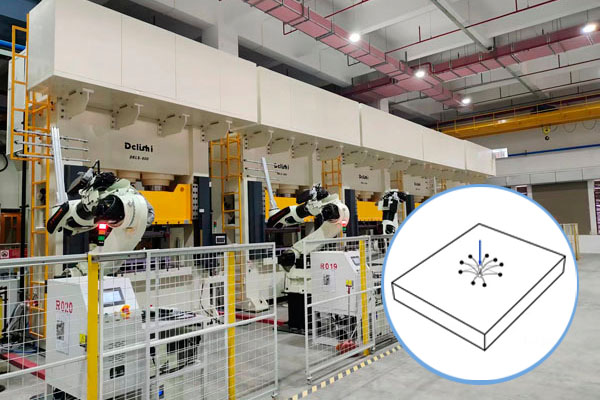The most basic hydraulic principle is Pascal's law: when any point in a static fluid is subjected to external force and generates pressure, this pressure is instantly transmitted to all points in the fluid.
In layman's terms, solids transmit pressure, and liquids transmit pressure. It is easy to understand that solids transmit pressure. How much force I use to press on an object, the object will press other things with that much force, and the force balance is easy to understand. But what does it mean that liquids transmit pressure?
A big difference between solids and liquids is that the atoms in solids are fixed in a certain position, so solids have a fixed shape. In liquids, atoms can move freely and are not fixed in a certain position, so liquids have no fixed shape but only a fixed volume.

Therefore, if a needle is pierced into the surface of a solid metal in a rectangular shape, assuming that the needle is sharp enough and only pierces one atom. Then the atom under the tip of the needle is confined to its original position and cannot move at will, so it can only deviate from the equilibrium position. However, the deviation of this atom will pull more atoms around it away from the equilibrium position. It is equivalent to an atom being pressed down, and a dozen atoms around it pull it together, not wanting it to be pressed down. Since more than a dozen people are pulling one, the force on each atom is naturally much smaller than the external force on that atom. When the atom being pressed reaches force balance, the combined force of these dozen atoms is equal to the external force on the tip of the needle. Although the forces are equal, the force on each atom is smaller, that is, the pressure is smaller (if pressure is defined as force/atom).
However, if in a confined space, such as the structure shown in the figure below, a thin long tube and a thick cylinder are put together, what will happen if a watertight piston is installed at the thin end and pushed down? The volume of water will be compressed. Although the position of water molecules is not fixed, the volume of water molecules is indeed constant, and each water molecule will maintain a certain comfortable distance. If the thin end of the piston is suddenly pressed down, the average distance between the piston and the nearby water molecules will suddenly shorten. These water molecules will run to other places. However, the average distance of water molecules in other places is also normal. If more water molecules run over, the average distance of water molecules in other places will also decrease. As a result, the average distance of water molecules in all places has become smaller, that is, the overall density of compressed water has increased, and there is a tendency to expand outward. Because the overall density increases, water molecules will not remember where they were compressed, that is, for water molecules, all the surrounding places are pressing me, and my resistance, that is, pressure, is also directed towards all the surrounding places. This results in that although a small amount of pressure is applied from the piston at the end, the density of the water increases everywhere, and the pressure increases everywhere.

It's like blowing up a balloon. Although you blow air from one direction, the pressure is equal in all directions when the balloon expands. Hydraulic press machinery use hydraulic fluid to apply pressure. The liquid is contained inside a cylinder and placed under pressure from a pump.
- Hydraulic Press Machinery
Tags :


 +86-13509801050
+86-13509801050
 E-mail
E-mail
